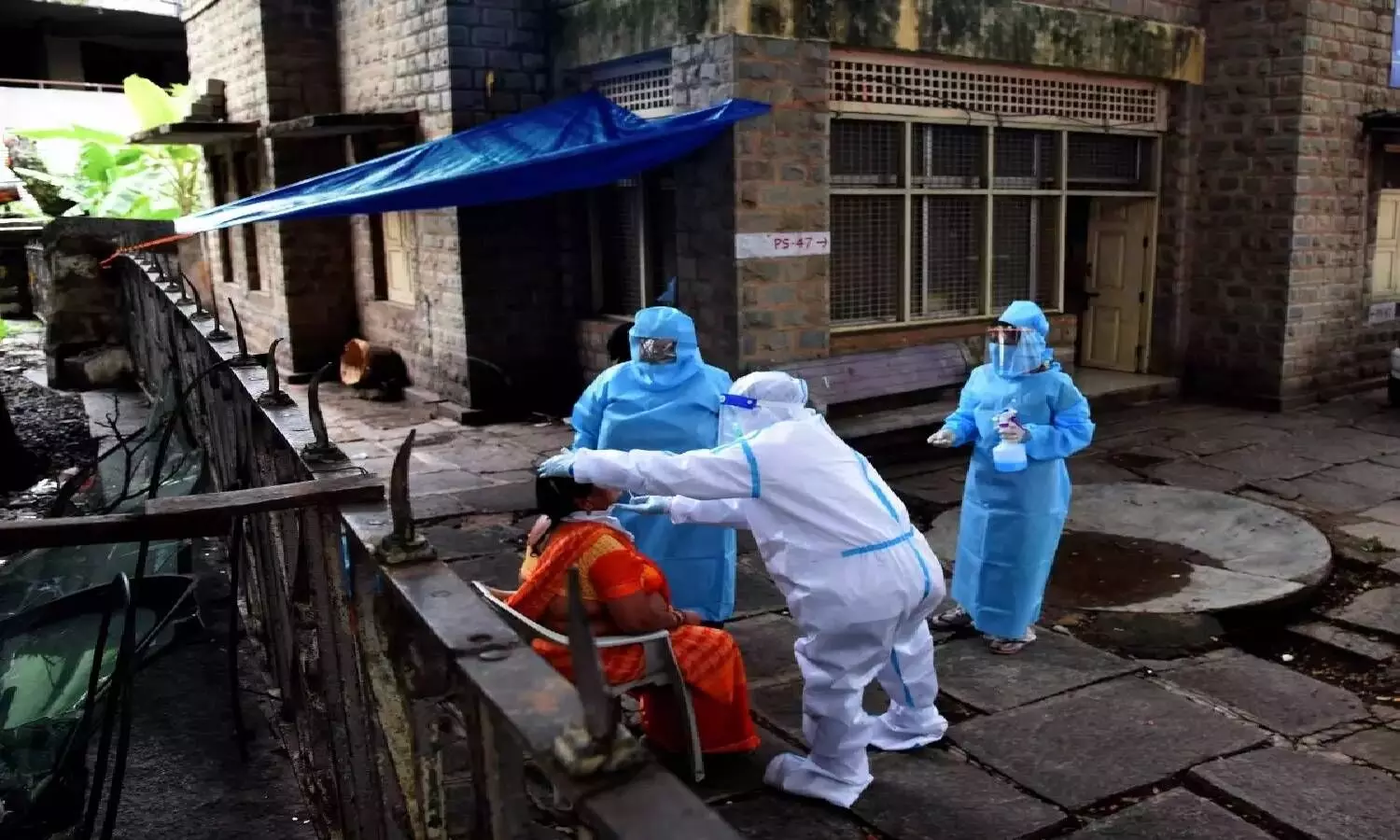Why is Bengaluru witnessing rise in new COVID cases
SARS-CoV-2 mutation rate in Bengaluru faster than rest of country
By Newsmeter Network
Hyderabad: In a recent study by the Indian Institute of Science, it was found that the SARS-CoV-2 virus is mutating at a faster rate in Bengaluru than in the rest of the country.
The study found that the virus was mutating faster than its 27 previous mutations in three isolates of SARS-CoV-2 from three Bengaluru locations with over 11 mutations per sample which is more than both the national average (8.4) and global average (7.3).
The study was published in the Journal of Proteome Research, done by Prof. Utpal Tatu and the team from the Department of Biochemistry at IISC. They have identified multiple mutations which showed that the host produces several proteins of their own as their body launches an immunological defense in response to the viral attack.
To better understand how the virus is mutating and its protein biology (proteins are made using genetic information), the team carried out a comprehensive "proteo-genomic" investigation – a series of analyses of SARS-CoV-2 isolates. The isolates or viral samples were recovered from nasal secretions of consenting Covid-19 positive individuals in Bengaluru.
Figure: Variant analysis in Indian isolates of the SARS-CoV-2 genome. The top panel of the figure indicates nucleotide variations (SNPs) in the genome sequence of the SARS-CoV-2 Bangalore isolates against the reference Wuhan-Hu-1 isolate complete genome sequence. Specific transitions and transversions with their colour-coding are mentioned on the right side of the panel. The bottom panel indicates the position of the missense mutations against the reference Wuhan-Hu-1 SARS-CoV-2 isolate.
Out of 27 mutations, 25 mutations were in the coding region, which generated 14 synonymous and 11 missense amino acid substitutions. A total of 3 of these 11 missense mutations could be of high impact as they substitute charged to an uncharged amino acid or vice versa and hence may impact the structure and consequently the function of the proteins.
Next-gen analysis
The genomic analysis was done using what molecular biologists like Tatu call next-generation sequencing (NGS), a technology that allows for rapid sequencing of the entire genome.
To understand the spread and evolutionary history of the virus, the team constructed a global phylogenetic tree, or a tree of relatedness, of viral isolates using the sequence data. In this analysis, it has been found that the Bengaluru isolates are most closely related to the one from Bangladesh. It also showed that the isolates in India have multiple origins rather than having evolved from a single ancestral variant.
Figure: Phylogenetic analysis of SARS-CoV-2 isolates. Whole-genome phylogeny representing the relationship of Bangalore SARS-CoV-2 isolates based on the Maximum Likelihood Method and Tamura model created using MEGA X. The phylogenetic analysis involved 40 SARS-CoV-2 sequences representing variants from 20 countries around the globe. The colors around the tree represent the country of origin for each isolate. Isolates from Bangalore are represented in red text showing close relation to the Bangladesh isolate.
The research team has also detected 13 different proteins most of them previously unidentified from clinical samples. "One such a protein called Orf9b, which suppresses the hosts' immune response, had been predicted, but the IISC team provided the first evidence of its expression," a statement issued by the research team said.
The study was primarily aimed at understanding how the virus is changing and is not about the recent spike in the number of cases in Bengaluru or across the country. The author says that further studies combined with patient severity details can help in predicting the prognosis of viral infection.